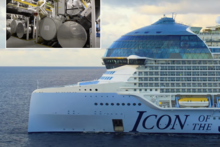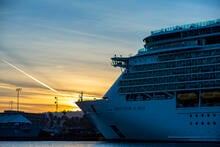Royal Caribbean Cruises Ltd. announced today it has signed a deal with Southern Power for Southern Power's 200-megawatt (MW) Reading Wind Facility. This initiative, which will offset up to 12 percent of Royal Caribbean's emissions beginning in 2020, is one of many programs the cruise line has to reduce greenhouse gas emissions through innovations at sea and in port.
The facility is expected to generate roughly 760,000 megawatt hours per year over the duration of the 12-year agreement, which translates to enough clean energy to offset 10-12 percent of Royal Caribbean's annual carbon emissions starting in 2020. With this innovative program, Royal Caribbean is able to apply a new approach while continuing its primary initiatives to advance sustainability efforts across the company's fleet.
The wind facility is located in Osage and Lyon Counties in Kasnas and the deal provides Southern Power with the economic basis to construct the project.
"This agreement complements our longstanding strategic initiatives to reduce the company's emissions and become a more sustainable operator," said Richard D. Fain, Chairman and CEO, Royal Caribbean Cruises Ltd. "We are constantly looking for new ways to reduce our environmental footprint, both in the short and long term, and thanks to our partnership with Southern Power this is the latest step in our journey."
The project is expected to break ground in the second quarter of 2019 and is expected to be complete by the second quarter of 2020. Southern Power will operate and maintain the facility upon completion.
Royal Caribbean is also employing several technologies and innovations to reduce greenhouse gas emissions and create more efficient vessels, including:
- Advanced Emission Purification systems, which remove approximately 98 percent of sulfur dioxide emissions
- Air lubrication systems to reduce drag and increase fuel efficiency
- Energy management software, an industry first, to achieve top fuel efficiency
- The introduction of new fuels such as liquefied natural gas, in the near future
- Onboard the ship: the use of energy-efficient equipment in galleys and the replacement of incandescent bulbs with fluorescent and LED lighting, as well as the introduction of fuel cells






